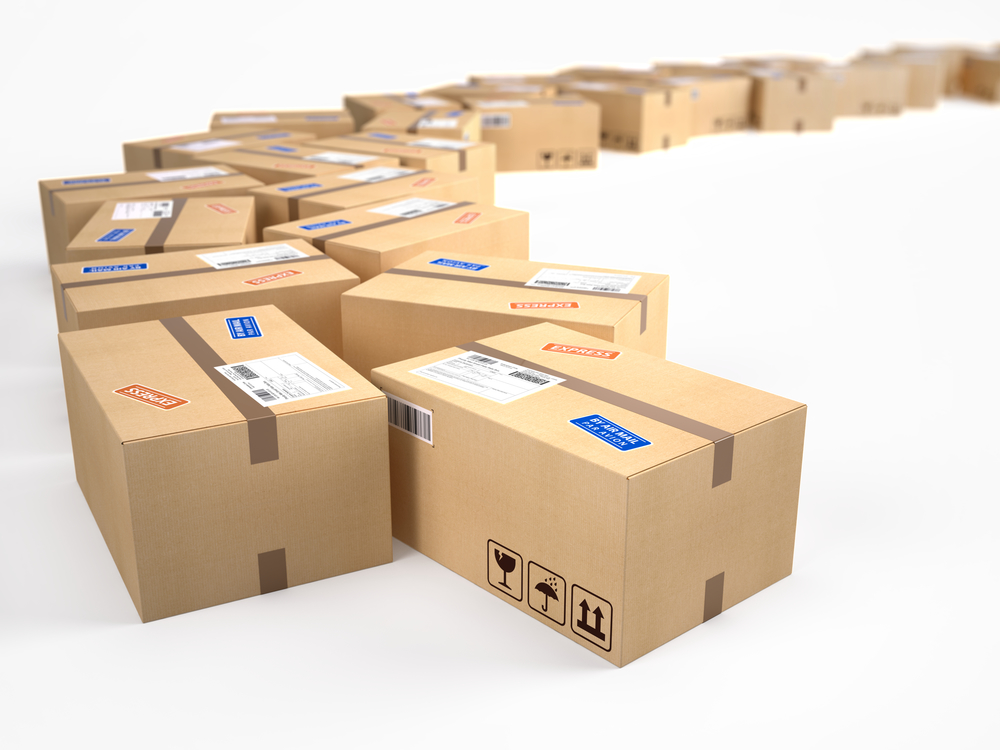

Do you remember studying the Shakespeare tragedy Hamlet when you were in school? In the play’s most famous soliloquy, the main character ponders: “To ship for free, or not for free, that is the question.” Okay, so maybe Hamlet didn’t say that exactly…but he might as well have! In today’s global economy, one of the biggest pickles eCommerce business owners face is whether to offer free shipping or not. We get asked this question all the time. This article is all about breaking down the mystery behind free shipping, and why we think it’s one of the best strategies to grow your small business. Cue Act 1, Scene 1!
Table of Contents
- What Do You Mean, “Free?”
- Why We Think You Should Offer Free Shipping
- How Shipping Software Can Help Reduce Your Shipping Costs
- Some Strategic Ways to Implement Free Shipping
What Do You Mean, “Free?”
First and foremost, it’s important to remember that “free” shipping isn’t really free. If your business offers free shipping, that means YOU pay for the cost of shipping instead of your customer. Someone has to pay for it, after all. Think of free shipping kind of like giving a friend a gift card for his or her birthday. Your friend technically receives the gift card for free because you paid for it. You get the picture.
Why We Think You Should Offer Free Shipping
Here’s the bottom line: offering free shipping boils down to building customer loyalty. In today’s world, customers have come to expect free shipping. In fact, nearly 4 in 5 shoppers feel that free shipping plays an important role when making a purchase online! Trust us when we tell you that you don’t want to be the odd one out. We know you’re probably not super excited about the idea of paying for shipping on all your packages…but don’t jump ship yet! You can drastically cut down your shipping costs by choosing the right shipping software.
How Shipping Software Can Help Reduce Your Shipping Costs
If you’re running an eCommerce business, postage can be one of your biggest expenses. However, the right shipping software can drastically cut those expenses down! As we touched on in our article Basics of Shipping for Small Businesses, shipping software can hook you up with USPS postage at huge discounts. On top of saving time and giving yourself the convenience to print your own postage at home, you’ll also save money by gaining access to special tiers of discounts. For USPS, that discounted pricing tier is known as Commercial Pricing; if you’re shipping with UPS, that special level of discounts is called the Digital Access Program. If you access those special levels of discounts from USPS and UPS, you’ll be able to save up to 89% and 76% off of what you’d pay to ship the same package at retail rates, respectively.
By taking advantage of those savings, you can probably afford to offer free shipping to your customers. If it means building customer loyalty, the juice is definitely worth the squeeze. With the myriad options out there to purchase products online, loyalty is everything! Just ask Kendrick Lamar—he’ll tell you all about it.
Some Strategic Ways to Implement Free Shipping
Here are some examples of how you can dip your toe into the free shipping waters before you dive in head-first:
Offer Free Shipping During the Holidays
When you’re starting off, you don’t have to necessarily offer free shipping year-round. We suggest trying it out at a time when sales volume tends to spike…like the holidays, for instance. Most E-commerce businesses experience boosted sales from October to December. For your store, you can choose specific timeframes (like Black Friday or Cyber Monday) to test a free shipping offer. Your profit margins during this time could be high enough to cover your shipping costs. Most importantly, it will be a good test run to help you understand how free shipping affects your business. Also, be sure you fulfill and ship all your orders by the holiday shipping deadlines!
Require a Minimum Purchase Amount
A lot of large online retailers offer free shipping year-round, but only if a customer spends a minimum amount on a transaction. Generally speaking, this minimum amount can fall anywhere between $50-100…but it’s different for every online store.
If you want to give this a shot, you’ll need to base this minimum amount on your average order value (or AOV, for short). It may seem obvious, but be practical when setting a minimum purchase amount. For example, if you know your AOV is $25, don’t start offering free shipping at $250. You’ll want the minimum amount to still allow your business to profit, but it has to be in a realistic range for the consumers you attract. That makes sense, right? After a while, you can play around with it some more to note the different results.
Factor Your Average Shipping Cost Into Your Prices
Similar to the above strategy, you can determine your average cost of shipping a package and factor that into your prices. One way to factor your shipping cost in is by treating it as a flat fee. For example, if your average shipping cost is $5, you can mark up your products by $5 each.
A more accurate way would be to calculate your average shipping cost as a percentage of your average order value (AOV). For example, if your average shipping cost is $10 and your AOV is $100, this percentage will be 10% (10/100 = 10%). Once you determine that percentage, you can raise all your products’ prices by that same percentage to make shipping affordable enough to be “free.”
Make it Exclusive to Valued Customers
Offering free shipping to your most loyal customers is another great way to try it out. For example, you can offer it up to those who follow your business on social media or subscribe to your email list. This is a great way to retain customers and make them feel special. It also creates a specific call to action for customers to engage with your business on social media. That’s built-in promotion at its finest! It’s easy to remind your customers how much they can save by taking advantage of this offer through posts, emails, or any other means. Don’t pretend like you’re not on Instagram all day, anyway. Now you can make it work for you!
Create Membership Programs
Like the old saying goes: membership has its privileges. For a typical member program, customers are charged one flat, annual fee. Paying this membership fee gives them access to certain perks, such as free shipping on all or some items. You can customize these perks to be whatever you want them to be! Repeat customers see membership privileges as a huge benefit, and those same privileges can incentivize new customers to sign up. Talk about double trouble!
Here’s the thing: creating a membership program usually requires A LOT of resources to spring into action. Therefore, we recommend trying some of the other ideas we listed above before building a membership program from the ground up.


mary garofalo
My product is gourmet food, dried, minimally perishable. It is expensive, How can I justify increasing my prices for “free shipping?” I would not be competitive in the market.
Rockwell Sands
Hi Mary – that’s a tough question for me to answer. If your product requires special kind of packaging and shipments in order for your food to retain its quality and it’s already priced high, you may not be able to get away with raising prices to offer free shipping. The only thing I can suggest is to make sure you’re shipping for the absolute cheapest possible prices, using free online shipping software. You can check out this article for more information here: https://www.shippingschool.com/choosing-best-shipping-software/
Hope this info helps!
Ezekiel Victor
Mary, Rockwell didn’t mention this, but what are your margins before offering free shipping? You said your product is expensive—chances are, your margins already easily cover the cost of absorbing shipping for your customers. If so, the only question left for you to answer is, after staging a trial free shipping A/B campaign, does the increase in profit tendered by offering free shipping exceed the added cost? If the answer is No, then when the campaign ends, no more free shipping… but if Yes, then congratulations, free shipping is your new normal.
[email protected]
Hi, thanks for the article!
Can you comment on how you would go about return shipping? Do you offer it for free as well like Amazon does? Or do you make the customer pay for it? If me as small business offer free return as well, costs start to build up quickly…
I would appreciate your opinion!
Ekaterina
Ekaterina
Hi, thanks for the article!
Can you comment on how you would go about return shipping? Do you offer it for free as well like Amazon does? Or do you make the customer pay for it? If me as small business offer free return as well, costs start to build up quickly…
I would appreciate your opinion!
Ekaterina
Ronda
Thanks. This is very helpful.
Armando Menendez
Since I am going to be using eBay integration, what should I choose as the shipping option on an eBay listing so that the “correct” calculated shipping times are reflected on eBay?
These articles are great, I am just going through the new process learning curve.
Thanks!
Armando Menendez
Rockwell Sands
Hey Armando! The best practice here is selecting the mail class you’ll most commonly be shipping in…and that depends on what you’re shipping. For example, if your packages are lightweight (under 16 ounces), you’ll want to choose First Class. If your products are over 16 ounces, a safe bet is choosing Priority Mail.
Patricia Stalma
Thank you! The articles are informative and quite helpful.